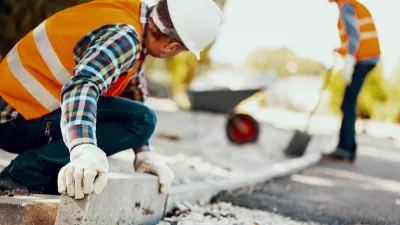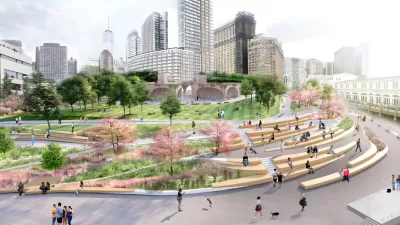Despite warnings of the threats posed by rising seas and more extreme storms in the years leading up to Hurricane Sandy, the New York region's preparations lagged behind where experts thought they should be. Has anything changed since Sandy?
"One year after Hurricane Sandy hurled itself at the Eastern seaboard, causing more than $68 billion in damage and leaving millions of people in shock, communities are still reeling from the aftereffects," writes Ariel Schwartz. "It's fair to say that New York, New Jersey, and other hard-hit states were unprepared for the storm."
"But is the East Coast any better prepared now? What would happen if another Sandy hit the region tomorrow? Based on discussions with experts in a number of sectors affected by the storm, the answer is that not much has changed. It seems that creating a culture of resilience is an extremely slow process."
Schwartz reviews some of the lessons learned, and steps taken, to protect the electricity grid, critical buildings, water-dependent industries, and vulnerable coastline.
FULL STORY: A Year Later, Has The East Coast Learned Anything From Hurricane Sandy?

Trump Administration Could Effectively End Housing Voucher Program
Federal officials are eyeing major cuts to the Section 8 program that helps millions of low-income households pay rent.

Planetizen Federal Action Tracker
A weekly monitor of how Trump’s orders and actions are impacting planners and planning in America.

Ken Jennings Launches Transit Web Series
The Jeopardy champ wants you to ride public transit.

How Project Connect Would Change ‘The Drag’
A popular — and sometimes deadly — Austin road will exchange car lanes for light rail.

Milwaukee Road to Get Complete Streets Upgrades
The city will reduce vehicle lanes and build a protected multi-use trail including bioswales and other water retention features on its ‘secret highway.’

Tackling Soil Contamination With Nature-Based Solutions
Los Angeles County residents and experts are turning to nature-based methods like bioremediation to address long-standing and fire-exacerbated soil contamination without resorting to costly and disruptive removal.
Urban Design for Planners 1: Software Tools
This six-course series explores essential urban design concepts using open source software and equips planners with the tools they need to participate fully in the urban design process.
Planning for Universal Design
Learn the tools for implementing Universal Design in planning regulations.
Ada County Highway District
Clanton & Associates, Inc.
Jessamine County Fiscal Court
Institute for Housing and Urban Development Studies (IHS)
City of Grandview
Harvard GSD Executive Education
Toledo-Lucas County Plan Commissions
Salt Lake City
NYU Wagner Graduate School of Public Service




























